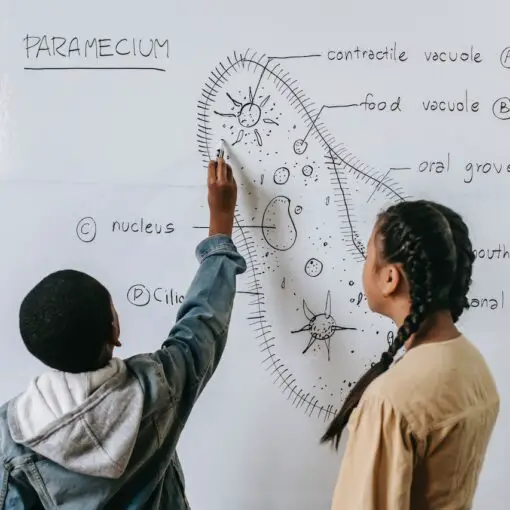Scientific thinking is a skill that allows individuals to critically analyze and question the world around them. It involves the use of logic, reasoning, and evidence-based inquiry to form hypotheses, conduct experiments, and draw conclusions. By cultivating scientific thinking, we develop a deeper understanding of the mechanisms underlying natural phenomena and gain insight into the complex workings of the universe.
As centuries progressed, scientific thinking has unraveled numerous mysteries, leading to advancements in various fields such as physics, chemistry, biology, and astronomy. This approach to knowledge acquisition not only benefits researchers and professionals but can also be applied to everyday life. By embracing scientific thinking, we become capable of making informed decisions, solving problems, and debunking misconceptions that arise in our day-to-day experiences.
In this article, we will explore some intriguing scientific questions that captivate the modern-day human mind. These questions push the boundaries of our understanding and inspire scientists, philosophers, and curious individuals to further investigate the unknown realms of our universe. So, let’s delve into the world of scientific thinking and ignite our minds with profound questions.
Fundamentals of Scientific Thinking
Scientific thinking is a critical skill that helps us better understand the world around us and make informed decisions. In this section, we’ll explore the fundamentals of scientific thinking, focusing on the Scientific Method and how to think like a scientist.
Scientific Method
The Scientific Method is a systematic approach to investigating and understanding phenomena in nature. At its core, it involves several key steps that scientists use to ensure their research and findings are based on reliable data and evidence:
- Observation: Noticing patterns or events in the natural world.
- Question: Developing a specific question or problem to explore.
- Hypothesis: Formulating a testable and falsifiable explanation for the observed phenomenon.
- Experiment: Designing and conducting controlled experiments to test the hypothesis.
- Data Collection and Analysis: Gathering and interpreting data from the experiment.
- Conclusion: Drawing conclusions based on the findings, and considering their implications for future research and understanding.
This method allows scientists to approach problems systematically and minimize the influence of personal bias. By following these steps, they can develop experiments that provide meaningful data for understanding the world around us.
Think Like a Scientist
To think like a scientist, one must adopt certain habits of mind and attitudes. These include:
- Curiosity: Demonstrating an eagerness to learn and explore new ideas and phenomena.
- Skepticism: Challenging one’s assumptions and being open to alternative explanations.
- Critical Thinking: Analyzing and evaluating information and arguments with a rational and objective mindset.
- Openness to Evidence: Basing conclusions on the best available evidence, rather than personal beliefs or opinions.
- Creativity: Using imagination and diverse perspectives to develop novel ideas and solutions.
- Collaboration: Working together with other scientists to share knowledge, ideas, and resources.
By adopting these attitudes and behaviors, one can approach problems with a rational, evidence-based framework, and contribute to the ongoing quest for understanding our complex world.
Components of Scientific Investigations
Planning an Experiment
When conducting a scientific investigation, the first step is planning an experiment. This involves identifying a research question or problem and designing a method to test a hypothesis. Experimental design should consider variables, sample size, and the appropriate methods for data collection. Proper planning ensures that the experiment produces reliable and accurate results.
For example, in a lab setting, researchers often employ a carefully constructed experimental design to isolate variables and establish appropriate conditions. This approach allows them to observe a particular phenomenon and gather the necessary data to draw valid conclusions.
Establishing Controls
A crucial aspect of a scientific investigation is establishing controls. Controls are essential in an experiment as they help researchers identify and minimize potential confounding factors or external influences. A control group is a standard against which the experimental group can be compared, which helps determine the effect of the independent variable being tested.
In any experiment, it’s important to consider both positive and negative controls. Positive controls produce expected outcomes, while negative controls do not show any response. These controls help validate the experimental setup and ensure that the observed results are due to the variable being tested.
Analyzing Results
After conducting an experiment, the next step in a scientific investigation involves analyzing results. This process includes:
- Organizing and summarizing collected data
- Using appropriate statistical methods to analyze the data
- Identifying trends, patterns, and relationships among variables
Through analyzing results, researchers evaluate the evidence obtained from the experimentation process. They draw conclusions based on the findings and determine whether the hypothesis is supported or refuted. Furthermore, this stage may lead to new questions and hypotheses, which in turn inform future investigations.
In conclusion, the components of scientific investigations include planning an experiment, establishing controls, and analyzing results. By adhering to each stage carefully, scientists ensure the reliability, accuracy, and validity of their research.
Real-World Applications
Understanding Metabolism
Metabolism is a crucial biological process that governs how our bodies convert food into energy. In the real world, understanding metabolism can help individuals optimize their diets and stay healthy. By examining the relationship between calorie intake, energy expenditure, and metabolic rate, scientists are able to develop personalized recommendations for individual’s nutritional needs.
For instance, research into metabolism has highlighted the importance of macronutrients such as proteins, fats, and carbohydrates. These compounds play a significant role in energy production, and their balance is key to maintaining optimal health.
| Macronutrient | Function |
|---|---|
| Protein | Essential for building and repairing tissues |
| Fat | Important for hormone production, energy storage, and more |
| Carbohydrates | Primary source of energy for the body’s functions |
By understanding these processes, we can make more informed dietary choices to better suit our individual needs and optimize our overall health.
Exploring Cancer Research
Cancer research is another area where scientific thinking and real-world applications intersect. In this field, scientists strive to understand the underlying mechanisms of cancer formation, progression, and potential treatments.
One significant area of research is investigating the role of genetics in cancer predisposition. Identifying genetic factors that contribute to cancer development helps us better understand why some people are more susceptible to certain forms of cancer, and it can inform the development of targeted treatments. Research has identified numerous genes associated with a higher risk of developing specific types of cancer, such as the BRCA1 and BRCA2 genes linked to breast and ovarian cancers.
Another critical area of cancer research is the development of new treatment strategies, such as immunotherapy. This approach harnesses the body’s immune system to fight cancer cells, improving patients’ chances of recovery and survival. Some recent advancements in immunotherapy include the use of checkpoint inhibitors and CAR T-cell therapy.
Through the application of scientific thinking, researchers continue to make groundbreaking discoveries in cancer research, directly impacting the lives of millions of individuals worldwide.
Frequently Asked Questions
What is the scientific method and how is it used to solve problems?
The scientific method is a systematic approach to understanding, exploring, and solving problems. It typically involves observation, asking questions, formulating hypotheses, designing experiments, collecting and analyzing data, and drawing conclusions. The scientific method allows scientists to make observations, test hypotheses, and ultimately gain knowledge about the world. This method helps ensure that scientific findings are reliable, verifiable, and can be built upon by other researchers.
How do scientists design experiments to test hypotheses?
Scientists design experiments to test hypotheses by developing a clear and testable research question, selecting appropriate variables, and establishing a controlled environment, with a treatment group and a control group. They then perform the experiment, collect data, and analyze the results using statistical methods. The experiment must be designed in such a way that it provides valid and reliable evidence to support or refute the hypothesis. This often involves ensuring proper controls, randomization, and replication of experiments, to minimize bias and chance effects.
What are independent and dependent variables in scientific investigations?
In a scientific investigation, an independent variable is the factor that is manipulated or controlled by the researcher, while a dependent variable is the factor that is being measured or observed. The independent variable is presumed to cause changes in the dependent variable. For example, if a scientist is studying the effect of a drug on blood pressure, the drug dosage would be the independent variable, and the blood pressure levels would be the dependent variable.
How do scientists ensure the validity and reliability of their research findings?
Scientists use various methods to ensure the validity and reliability of their research findings. Validity refers to the accuracy of the results, while reliability refers to the consistency and repeatability of the findings. To ensure validity, researchers employ rigorous experimental designs that control confounding variables, use objective measurement techniques, and replicate their studies with different samples and conditions. To ensure reliability, scientists conduct multiple trials, collect and analyze a large amount of data, and use statistical methods to estimate the consistency of their findings.
Why is the process of peer-review important in scientific research?
Peer-review is a critical aspect of the scientific process as it helps to maintain the integrity, quality, and credibility of scientific research. In the peer-review process, scientific studies are scrutinized by experts in the same field, who evaluate the methodology, data, and conclusions of the research. This ensures that the published research meets accepted standards of scientific rigor, and helps to identify and correct any errors or biases before the study is made public. The peer-review process also contributes to the self-correcting nature of science, as new findings are continually being integrated into the existing body of knowledge.
How does scientific thinking help us differentiate between correlation and causation?
Scientific thinking helps us differentiate between correlation and causation through critical analysis, experimental design, and statistical methods. Correlation refers to a relationship between two variables, where changes in one variable are associated with changes in another variable. Causation, on the other hand, implies that changes in one variable directly cause changes in another variable. By designing controlled experiments, carefully selecting variables, and using statistical techniques, scientists can identify causal relationships and distinguish them from mere correlations. This distinction is crucial in understanding the true nature of relationships between variables, and avoiding false conclusions and misleading interpretations.





